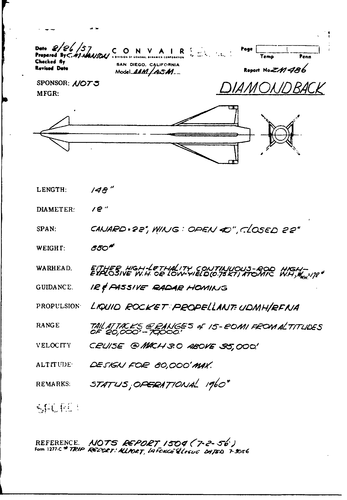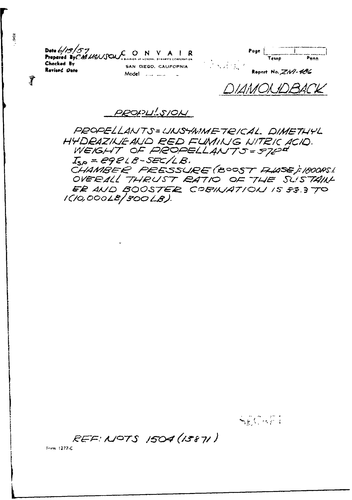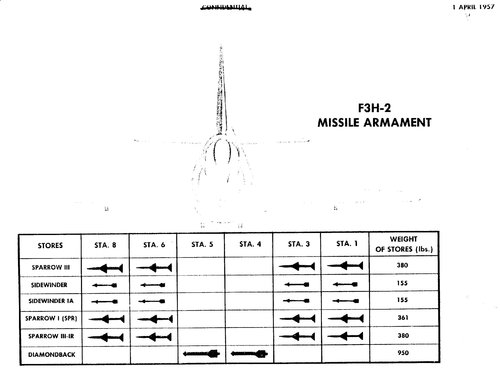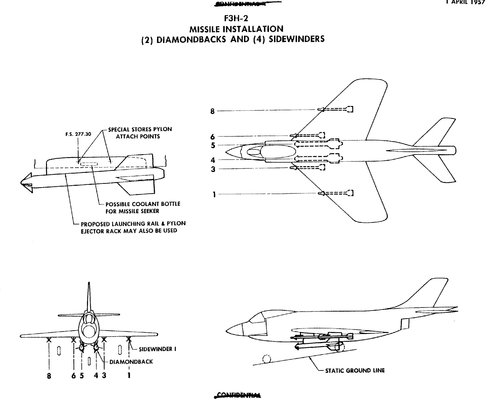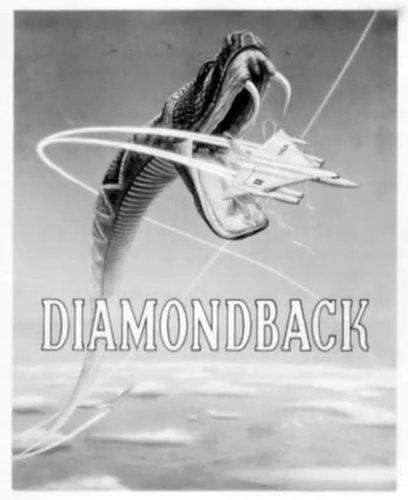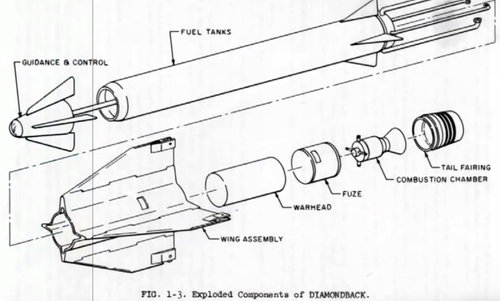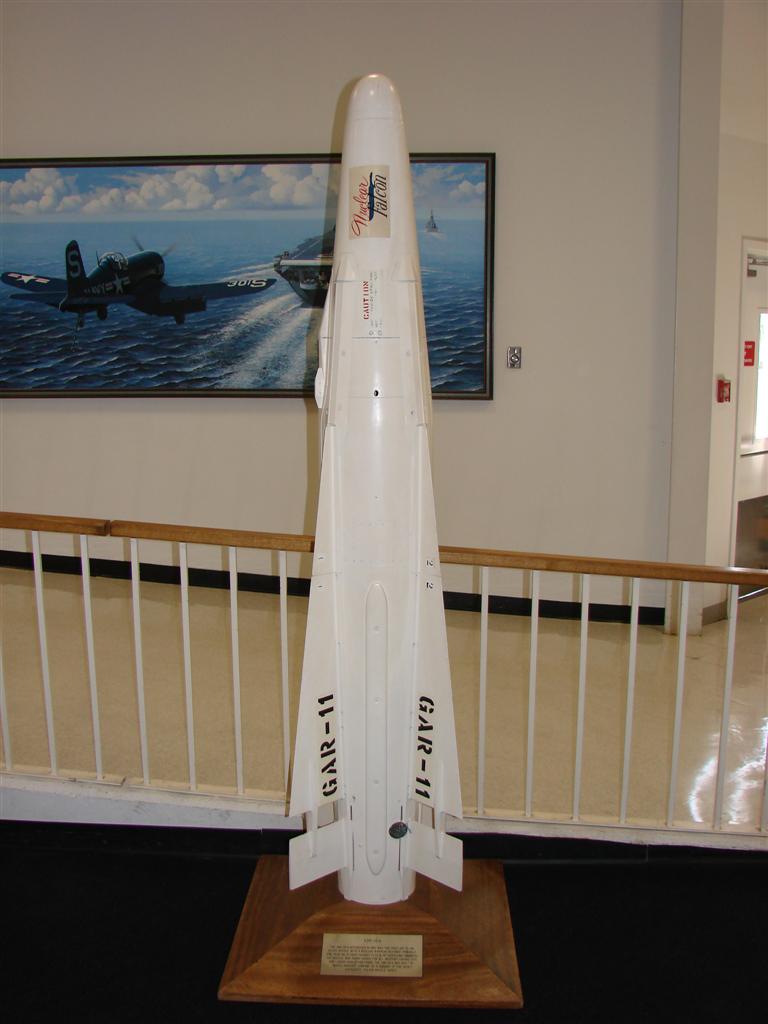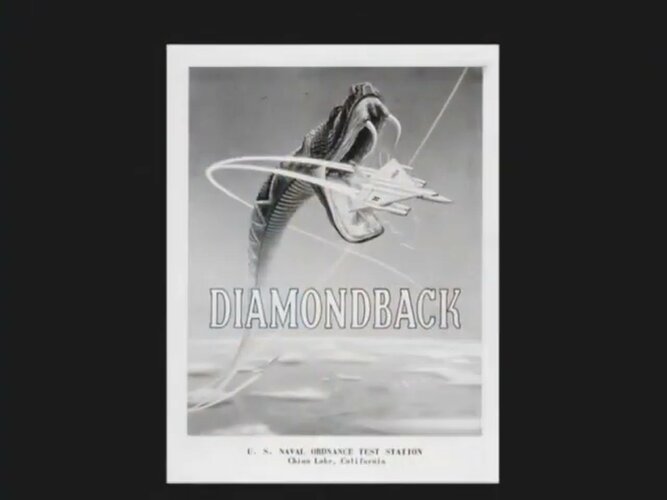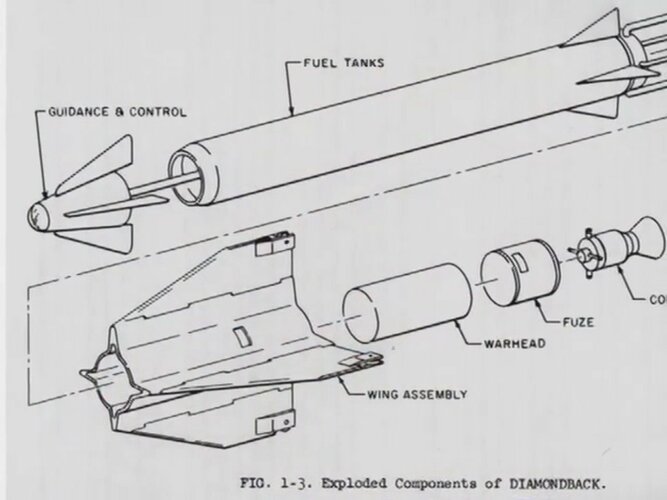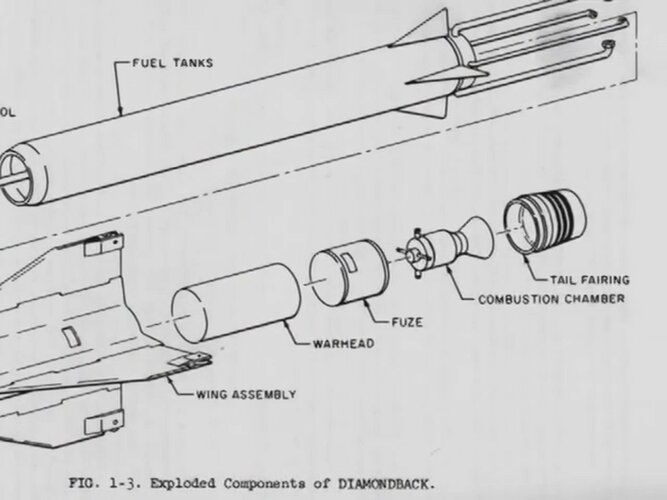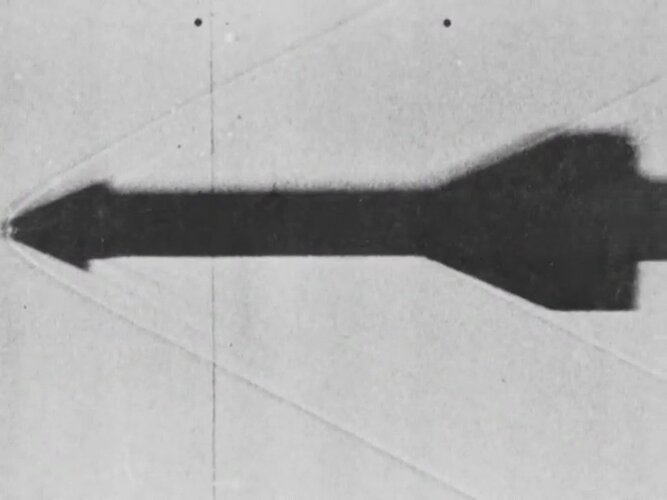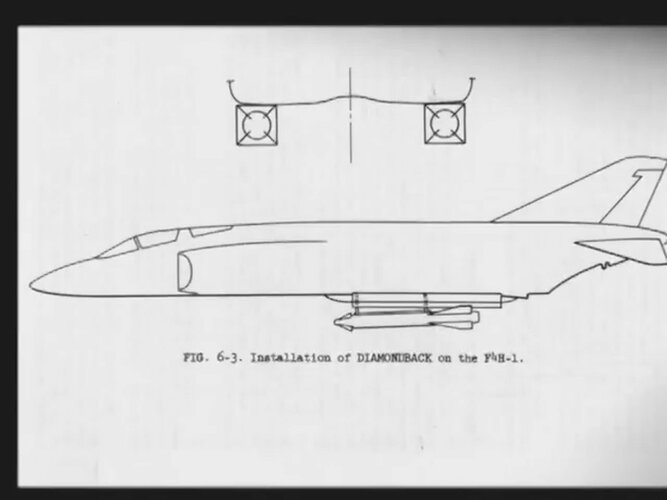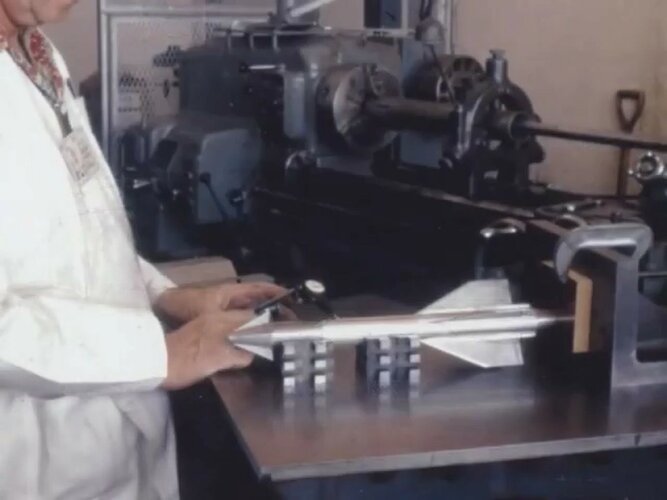In the early 1950s, the possibility of Soviet supersonic high altitude bombers resulted in a desire for a longer range, higher speed Sidewinder. This was called Diamondback and had a 12 inch diameter instead of the 5 inch diameter of Sidewinder. A demand thrust bipropellant liquid fuel propulsion unit was needed to accelerate and then maintain missile velocity just short of IR dome overheating speeds.
Diamondback also used a nuclear warhead, to guarantee a kill.
The project ran from 1955 to 1958.
Sources:
D. G. Blanchard "A brief history of Air-Intercept Missile 9 (Sidewinder)"
J. M. Robbins "The China Lake Propulsion Laboratories"
Diamondback also used a nuclear warhead, to guarantee a kill.
The project ran from 1955 to 1958.
Sources:
D. G. Blanchard "A brief history of Air-Intercept Missile 9 (Sidewinder)"
J. M. Robbins "The China Lake Propulsion Laboratories"


